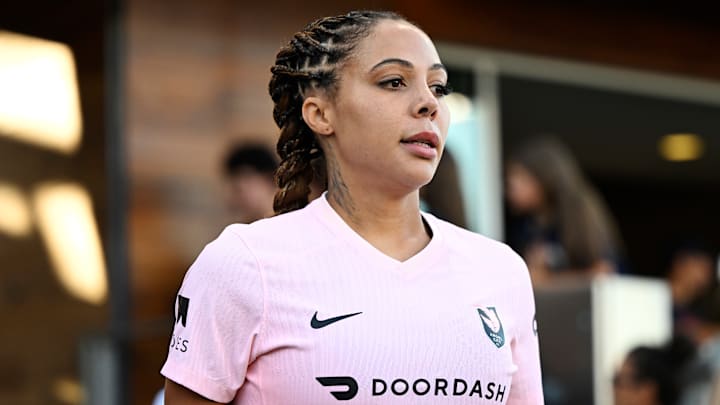Angel City FC faces a challenge that goes beyond the field: adapting the physical preparation, recovery, and performance to each one of them. From 16 to 37 years, managing the roster needs to be delicate and very specific on an individual basis. The reality also reflects itself in training and the stories of overcoming challenges from the likes of Sydney Leroux and Kennedy Fuller.
Follow MLS Multiplex on X (Twitter).
Sydney Leroux: Reimagining Football at Age 34
Sydney Leroux, one of the iconic forwards in the NWSL, is still a mainstay for Angel City FC. The 34-year-old continues to put up strong performances and finds herself at the top of her adaptability game after all these years. She finished the 2024 season as the team's co-leading scorer, netting seven goals in the regular season.
But Leroux is not the same player who survived on pure speed to simply outrun defenders. She's the first to admit that, after two children and the umpteen passage of time, she had to reinvent her game. Now, her game is defined by her reading of the game: where she makes calculated runs and positions herself to finish.

It's all part of an evolution that has been accompanied by changes to her physical training. "We do a lot of work on calves. We do a lot of work on core stability—especially because I've had two kids. I'm always trying to get stronger," she says.
Recovery also requires additional care. Leroux emphasizes massages and regular acupuncture treatments, techniques that were never available to league players years earlier. She remembers when even ultrasound machines, for example, were in such short supply that athletes had to buy them for themselves. Now, technical support and training methods allow veterans such as Leroux to keep competing at the top level.
The New Generation and the Challenges of Turning Pro
While Leroux embodies experience and tenure, 17-year-old Kennedy Fuller embodies the youth and future of Angel City. Fuller is a perfect case in point in the dramatic ways that resources for young athletes have changed. When she joined the club, Fuller said, off-field support was light years beyond what she'd been accustomed to at the youth level.
Personalized work has been one of the aspects that more affected Fuller. Her strengthening for instance was done in a manner that increased her explosiveness in the first three steps. This becomes necessary for players who need agility in a very short area. Aside from strengthening exercises, Fuller focuses on certain technical details. For example, she spends a lot of time reviewing videos to improve her running form.
However, Fuller also realizes that youth comes with its own set of risks. Injuries such as torn ACLs happen more to teenage and young adult women players, most especially during high-impact sports like soccer. That is why she adopts a preventative approach, focusing on prehabilitation to ensure her longevity. "For me, it's more about prehab. I want to do it because I want as much longevity as possible. But at the end of the day you can be the best player in the world, but if you're injured all of the time, it doesn't matter, she said.

Nutrition and Sleep: The Silent Pillars of Performance
In addition to training and physical recovery, nutrition and rest are keystones in keeping performance at all ages. Fuller, for instance, learned to adapt her eating habits before matches. "We eat three times before we play," she comments. "I have never eaten that much in my life before a game!" She noted that equalizing carbohydrates, proteins, and fats is key to sustaining her body through a match.
Sleep has also become different for Fuller. She learned that naps can be a great weapon and that her body should be listened to, taking rest when it demands it. It's a more preventative mindset, one that veterans like Leroux have been practicing for years and that young athletes are now implementing early on in their careers.
Off-Field Support: A Revolution in Women's Soccer
But the advances in infrastructure and technical support within the NWSL-not just a better stadium and top-notch grass but advanced physiotherapy, neuromuscular training, and individual recovery plans-have changed everything in women's soccer. This benefits not just veterans like Leroux but also fosters the development of young talents like Fuller.
These developments, so clearly in the present, were unthinkable during the league's infancy. Leroux reflects upon times that were tenuous but also could relish the type of improvement in excellence that has already allowed athletes to be looked after in order to prolong their careers and fulfill their potential to the highest order.
